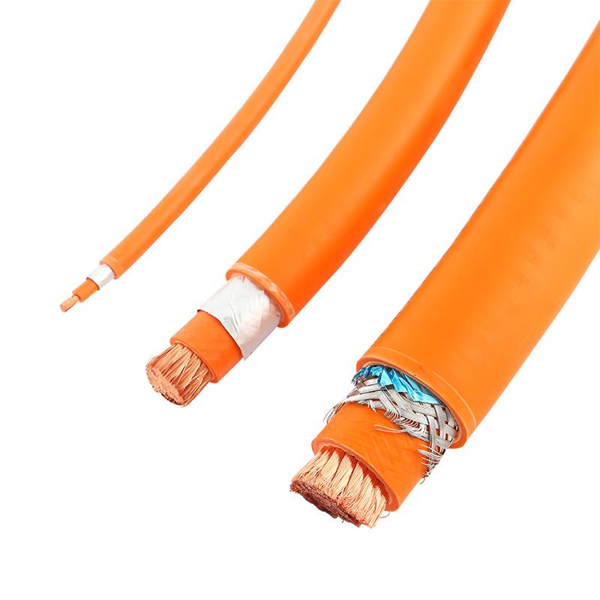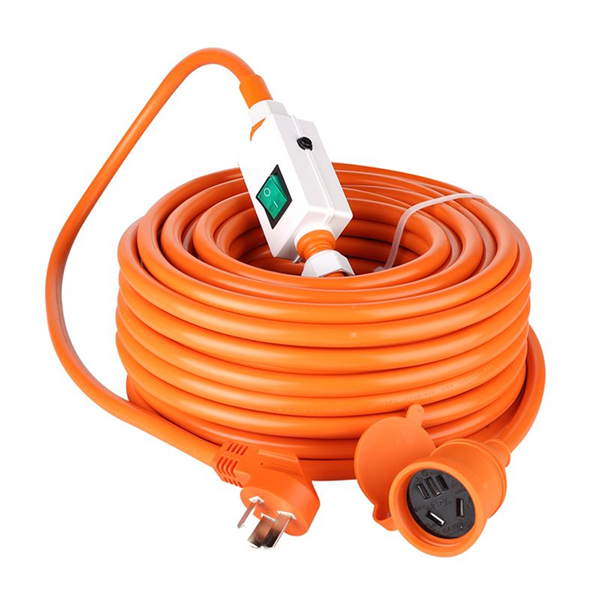Electric passenger cars, as the name implies, are powered by electricity, so they must use high-power motors and large-capacity batteries. And to reduce charging time, high-voltage, high-current charging technology is used, which requires the use of high-voltage electrical systems.
The electric passenger car’s high-voltage electrical system connects all the components such as the motor, battery, and power electronics together, where the electric passenger car’s high-voltage wiring harness is the electrical path that connects the electric passenger car energy source (fuel cell) to the power unit.
To meet the driving requirements of electric passenger cars and the requirements for reliability and safety of wiring harness connection under various driving conditions, this paper designs a high-voltage, high-current (high-power) electric passenger car high-voltage wiring harness.

To fill the research gap in the field of electric passenger car high-voltage wiring harness, and to get rid of the current situation that the high-voltage wiring harness required in electric passenger cars is purchased directly from foreign products, the independent research and development of a high-voltage and high-current electric passenger car high-voltage wiring harness is carried out.
According to the requirements of a high-voltage electrical system for electric passenger cars, the designed high-voltage wiring harness for electric passenger cars was developed.
The designed electric passenger car high-voltage wiring harness should meet the following requirements: a. High-voltage and high-current usability requirements. b. Safety and reliability requirements such as electromagnetic interference resistance, water resistance, vibration resistance, wear resistance, flame retardancy, and contact reliability.
Design of high-voltage cables
Traditional cars are powered by gasoline engines, the role of traditional automotive cable is to transmit control signals, and withstand the current and voltage are very small, so the cable diameter is small, and the structure is only the conductor plus insulation, very simple.
However, according to the requirements of electric passenger car high-voltage cable, electric passenger car high-voltage cable mainly plays the role of energy transmission, the need to transfer the energy of the battery to each subsystem. Therefore, the designed electric passenger car’s high voltage harness must meet the high voltage and high current transmission.
The electric passenger EV high-voltage cable is subjected to a higher voltage (rated voltage up to 600V), higher current (rated current up to 600A), and stronger electromagnetic radiation, so the diameter of the cable is significantly increased.
At the same time, to avoid strong electromagnetic interference from electromagnetic radiation to the surrounding electronic equipment, affecting the normal operation of other electronic equipment.
The cable is also designed with an anti-electromagnetic interference shielding structure, i.e. coaxial structure, using the inner conductor and outer conductor (shielding) together, the magnetic field inside the cable is distributed in concentric circles.

And the electric field from the inner conductor points to and stops at the outer conductor so that the external electromagnetic field around the cable is zero, that is, shielding the electromagnetic radiation, thus ensuring the normal operation of electric vehicles.
In the early days, the insulation materials used for automotive cables were mainly PVC (polyvinyl chloride), but PVC contains lead, which is harmful to the human body. In recent years, it has been gradually replaced by LSZH (low smoke and halogen-free materials), TPE (thermoplastic elastomer), XLPE (cross-linked polyethylene), silicone rubber, and other materials.
As the electric passenger car, high-voltage cable meets the high-voltage high current, and anti-electromagnetic interference at the same time to meet the wear-resistant and flame retardant requirements, so the performance of these materials are compared.
a. LSZH can be divided into two categories: PO (polyolefin) class and EPR (ethylene propylene rubber) class. The formulation of PO-type LSZH flame retardant cable material has a large amount of AI(OH)3 and Mg(OH)2 inorganic flame retardants. So that the cable material has better flame retardant, low smoke, halogen-free, low toxicity, and other characteristics. However, it also differs from other non-flame-retardant materials and halogen-containing flame-retardant materials in physical and mechanical properties, electrical properties, and extrusion process performance.
b. TPE is a polymer material with the characteristics of both rubber and thermoplastic, showing the high elasticity of rubber at room temperature, and plasticizing and molding at high temperatures. However, this material is not wear-resistant and cannot meet the requirements of high-voltage wiring harnesses for electric passenger cars.
c. XLPE is made from ordinary PE (polyethylene) material with a temperature resistance grade of 75℃ after irradiation cross-linking. Its temperature resistance grade can reach 150℃, and has excellent physical and mechanical properties, overload resistance, and long life, but does not resist ignition.
d. The breakdown voltage of silicone rubber is high, so it has arc resistance, leakage trace resistance, and ozone resistance. It also has good resistance to high and low temperatures, high-temperature resistance up to 200 ℃, good insulation performance, stable performance in high temperature and high humidity conditions, and flame retardant.
After comparing the performance of the above materials, silicone rubber has become the first choice of insulation material for high-voltage cables of electric passenger cars because of its good physical and mechanical properties, long service life, and low price.
—ZMS Cable Group
